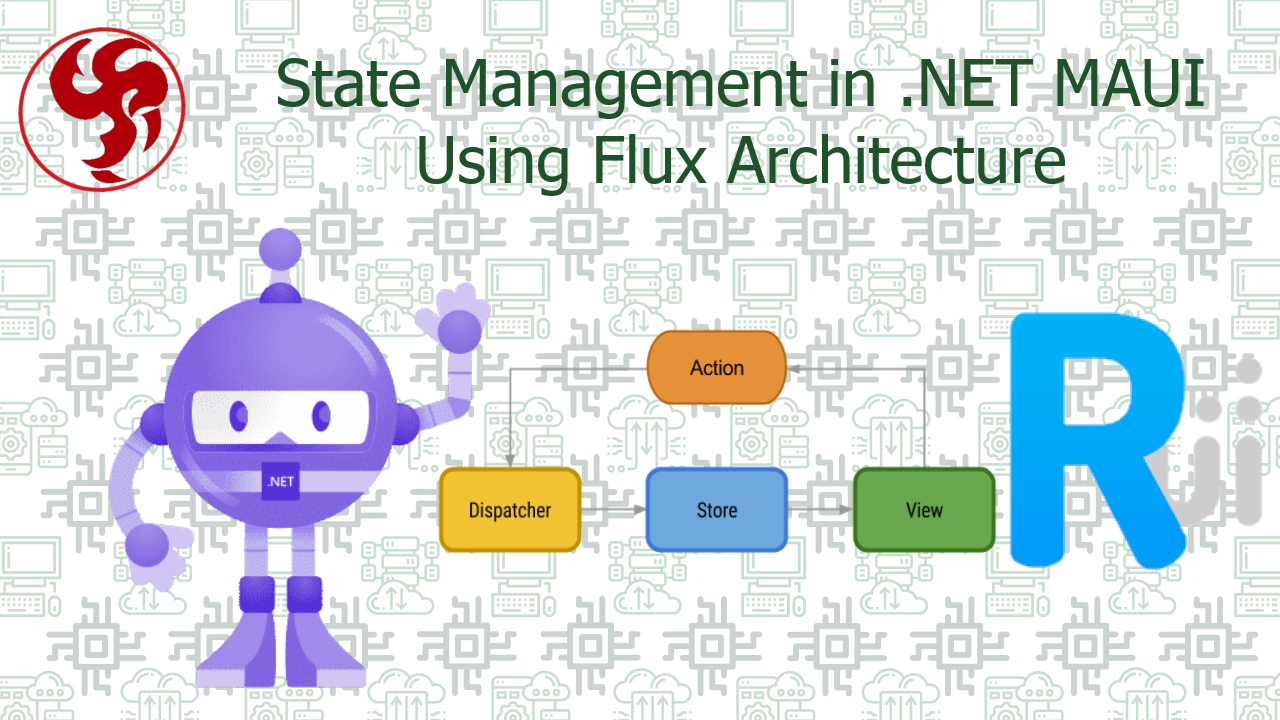State Management in .NET MAUI Using Flux Architecture
Managing state in modern client applications is one of the most complex challenges—especially when dealing with cross-platform UI. While MVVM (Model-View-ViewModel) is the standard in .NET MAUI, applying a unidirectional data flow pattern like Flux offers better control over state predictability, debugging, and testability—similar to how React handles state with Redux.
In this comprehensive guide, we'll explore how to implement the Flux architecture in .NET MAUI, compare it with MVVM, and discuss advanced concepts like middleware, time-travel debugging, and Reactive Extensions (Rx.NET ).
🧠 1. Understanding the Flux Architecture
Flux is a design pattern introduced by Facebook for managing state in client-side applications. Unlike MVVM, which allows bidirectional data binding, Flux enforces a strict unidirectional data flow, making it easier to track state changes and debug applications.
Core Principles of Flux
Unidirectional Data Flow
Actions → Dispatcher → Store → View → (New Actions)
No two-way bindings, ensuring predictable state updates.
Single Source of Truth
- The Store holds the entire application state, eliminating inconsistencies.
Immutable State
- State is never modified directly; instead, new state objects are created.
Pure Updates
- Reducers (or dispatchers) apply actions in a deterministic way.
Flux vs. Redux
Flux allows multiple stores (modular state management).
Redux (a Flux variant) enforces a single store, simplifying state management further.
In this guide, we’ll implement a Flux-like pattern in .NET MAUI.
📦 2. Defining Actions and State
Actions describe what happened in the app (e.g., incrementing a counter). The State represents the current snapshot of data.
Example: Counter App
🗃️ 3. Building a Centralized Store
The Store holds the state, processes actions, and notifies subscribers when changes occur.
Basic Store Implementation
Making the Store Thread-Safe
Since UI updates must run on the main thread, we can use MainThread.BeginInvokeOnMainThread:
🖼️ 4. Binding the Store to the UI
In a .NET MAUI ContentPage, we subscribe to store changes and update the UI reactively.
Example: CounterPage.xaml.cs
🧪 5. Flux vs. MVVM: When to Use Which?
| Feature | MVVM | Flux |
|---|---|---|
| Data Flow | Bidirectional (bindings) | Unidirectional (actions) |
| State Management | Distributed (ViewModels) | Centralized (Store) |
| Debugging | Harder (scattered logic) | Easier (single source) |
| Undo/Redo | Manual tracking | Built-in (state snapshots) |
| Testability | Requires mocking | Pure functions (actions) |
| Complexity | Simpler for small apps | Better for large-scale apps |
When to Choose Flux?
✅ Shared state across multiple views (e.g., user session, shopping cart)
✅ Need for time-travel debugging (replaying state changes)
✅ Predictable state updates (critical for financial/medical apps)
When to Stick with MVVM?
✅ Simple forms-based apps
✅ Rapid prototyping (less boilerplate)
✅ Teams familiar with XAML bindings
🧩 6. Advanced Flux Concepts
1. Middleware (Logging, API Calls)
Middleware intercepts actions before they reach the store. Example:
2. Time-Travel Debugging
Store previous states in a list and allow replaying them:
3. Combining with Rx.NET (Reactive Extensions)
Instead of C# events, use IObservable for reactive state updates:
4. Combining Stores (Modular State)
For larger apps, split state into multiple stores:
✅ 7. Conclusion
While MVVM remains the default choice for .NET MAUI, the Flux architecture provides a scalable, predictable, and debuggable alternative for complex state management. By enforcing unidirectional data flow, centralized state, and immutable updates, Flux simplifies large applications where shared state, undo/redo, and debugging are critical.
Key Takeaways
✔ Flux enforces a strict unidirectional data flow (actions → store → view).
✔ Centralized state improves debugging (time-travel, logging).
✔ Middleware allows intercepting actions (logging, API calls).
✔ Works well with Rx.NET for reactive programming.
✔ Best suited for large-scale apps with shared state.
